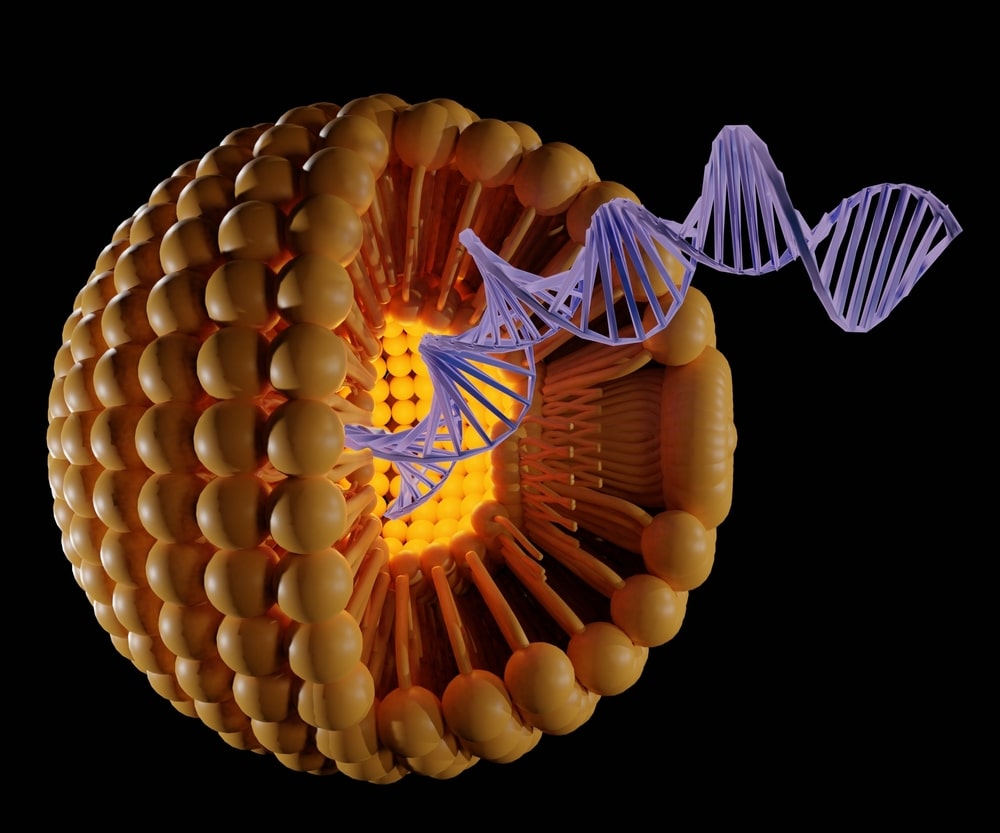What Are Lipid Nanoparticles?

Lipid nanotechnology is an area of nanotechnology, which explores methods to modify lipids in order to harness desirable properties that are unavailable with unmodified lipids. Lipids are a broad group of naturally occurring molecules, as well as synthetic entities. It is an interdisciplinary field involving chemistry, biochemistry, molecular biology and physics.
Lipid nanoparticles are tiny capsules of fat and protein molecules, with a diameter just large enough to transport drugs through the body. They’re made from a single type of biomolecule—typically lipid or polyketide—and typically deliver one drug molecule at a time. This simplicity is what makes them so appealing for the drug industry: Lipid nanoparticles can be produced rapidly, cheaply, and efficiently in large quantities.
Lipid Nanoparticles Definition
Lipid nanoparticles are tiny particles composed of lipids, or fats. These types of nanoparticles can be used in a variety of ways including drug delivery, food and cosmetics. They have anti-inflammatory effects and can also prevent infection from bacteria as well as inhibit cancer cell growth.
For example, a lipid nanoparticle could be developed to deliver drugs that target cancer cells. These particles would then be administered intravenously and travel through the bloodstream until they encounter tumor cells. Once they recognize these cells, the lipid nanoparticles would enter them and release their payload.
Lipids are a type of molecule found in both plants and animals. They make up the cell membranes of all living creatures, as well as many bacteria. Lipids are also the building blocks for hormones such as testosterone, estrogen and progesteronLipid nanoparticles are tiny particles composed of lipids, or fats. These types of nanoparticles can be used in a variety of ways including drug delivery, food and cosmetics.
What are lipid nanoparticles made of?
Lipid nanoparticles are made up of lipids, which are a type of fat that is found in many living things. They are composed of long chains of carbon atoms with hydrogen, oxygen, and nitrogen added. The chemical composition determines the shape and functionality of a lipid nanoparticle.
Lipid nanoparticles are typically made of one or more types of lipids, including:
- Phosphatidylcholine (PC)
- Phosphatidylethanolamine (PE)
- Phosphatidylserine (PS)
Lipid nanoparticles are used in a variety of applications including drug delivery, food and cosmetics. They can be made from a variety of materials including soybean oil and fish oil.
How do lipid nanoparticles work?
Lipid nanoparticles are a type of drug delivery system that uses lipids to deliver drugs to specific cells in the body. In the body, lipids (fats) are stored as droplets in the cytoplasm of most cells. The structure of these droplets makes it possible for lipid nanoparticles to carry drugs and infiltrate specific cells by carrying drugs that can be absorbed by the cells in question.
Advantages of Lipid Nanoparticles
There are a number of advantages to using lipid nanoparticles.
Targeted delivery of medications
One of the most important advantages is that they can be used to target specific cells. This means that they can deliver drugs and other substances directly to a specific cancer cell, for example, and only affect those cells. This makes them very useful in medicine and other areas where targeted delivery is important.
Stability
Lipid nanoparticles are more stable than liposomes. This is because lipid nanoparticles are made out of synthetic or natural polymers, which do not have the same tendency to degrade as liposomes do. This means that the drug will remain intact for longer in your body and be able to reach its target cells at a higher percentage rate than other types of delivery systems can.
Increased bioavailability of drugs
Lipid nanoparticles have been shown to increase the bioavailability of drugs by creating a bio-lipidic barrier on their surface, which protects them from degradation when they enter into your bloodstream. In addition, this layer allows them to penetrate through cell membranes much more easily than other delivery strategies can because there’s less resistance when they come into contact with these surfaces (since they’re mostly made up of phospholipids).
Easily modified
Lipid nanoparticles can be easily modified to encapsulate a wide range of drugs and other substances, making them versatile in terms of what they can be used for. They can be modified to change their physical characteristics, such as size and surface charge. Depending on what you want them to do, they can also be engineered to have different shapes (e.g. spherical or fibrous).
Are lipid nanoparticles safe?
Lipid nanoparticles are safe for use in humans, animals, plants and the environment. Lipid nanoparticles can be used to deliver drugs to targeted tissues or organs and can be adapted for oral or intravenous delivery of drugs. The unique properties of lipid nanoparticles make them well suited to treat a variety of diseases including cancer, neurological disorders and cardiovascular diseases.
Due to their small size, lipid nanoparticles are able to penetrate the blood-brain barrier and other cellular barriers in the body. This makes them an effective delivery system for treating diseases that affect specific organs or tissues.
Lipid nanoparticles are a promising treatment for cancer, but they are not a silver bullet. To determine the best way to use them in a particular patient, doctors will need to consider factors like the type and stage of cancer being treated, as well as other treatments available.